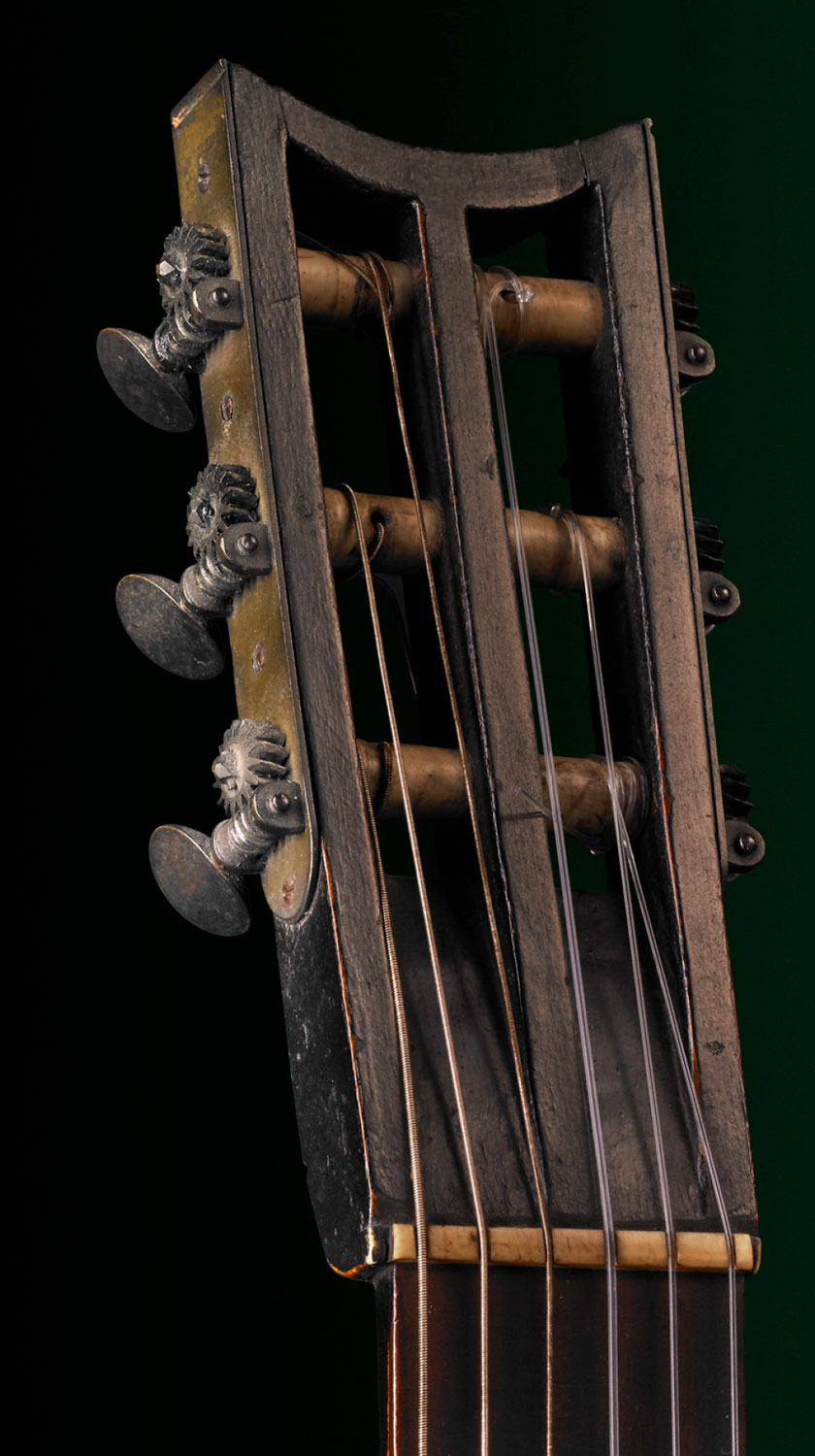Panormo's Workshop
The 1822 Guitar
Like the 1816 guitar in this collection, the 1822 bears the same simple “Panormo Fecit London” label. Similarly, neither guitar is adorned with the lavish pearl inlays typical of the Mirecourt luthiers, nor the decorative bridge mustachios of the Neapolitans. Instead, Panormo’s work is tastefully understated and continued to be so throughout his career. The obvious outside influence can be seen in the design of his rosettes. Both the 1816 and 1822 have off-set square pearl shapes encircling the sound hole, a motif used by the Spanish makers Manuel Martínez of Málaga and Juan Pagés of Cádiz.


However, the 1822 introduces new design elements that were to become Panormo trademarks for the remainder of his career. These included a raised beveled block bridge with teardrops branching off each side, ending in a pearl button, and his signature crescent-shaped headstock. Gone are the friction pegs found on the 1816 guitar, now replaced by mechanical tuners with metal buttons. The London makers were not the first to use mechanical tuning machines, but they were certainly the first to widely adopt this new invention.
